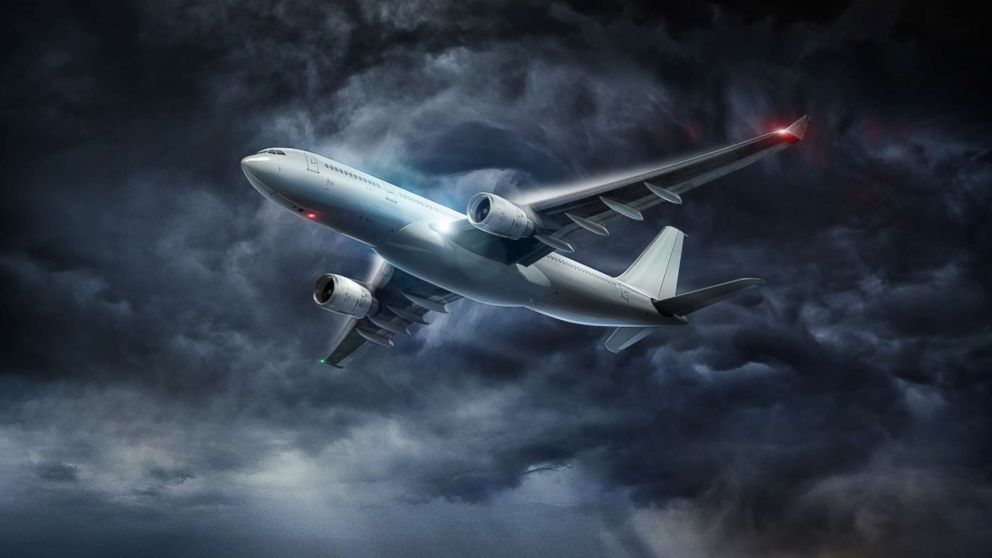Air travel is generally considered a safe mode of transportation. However, incidents like the recent Singapore Airlines flight encountering severe turbulence can be frightening for passengers and raise concerns about safety. This blog post will explore this incident, the potential link to climate change, and air turbulence in South Asia.
The Singapore Airlines Incident

In May 2024, a Singapore Airlines flight from London to Singapore experienced extreme turbulence over the Indian Ocean. The plane dropped significantly in a short period, causing injuries to passengers and a tragic death. The investigation revealed the plane encountered powerful shifts in gravitational force, likely due to clear air turbulence. This type of turbulence can be particularly dangerous as it’s often unpredictable.
Climate Change and Turbulence
While the exact cause of the Singapore Airlines incident remains under investigation, some experts theorize a connection to climate change. A warming planet can lead to more extreme weather events, potentially impacting air currents and creating more turbulence. However, further research is needed to establish a definitive link.
Turbulence in South Asia
South Asia experiences varying levels of turbulence depending on the season and location. Mountain ranges like the Himalayas can create unpredictable airflows, while monsoons during the summer months can bring increased turbulence. Pilots are trained to navigate these conditions, and modern aircraft are built to withstand significant turbulence.
Staying Safe While Flying
Despite the incident, air travel remains statistically safe. Here are some tips for staying safe during turbulence:
- Always wear your seatbelt throughout the flight.
- Follow crew instructions regarding seatbelts and stowing carry-on luggage.
- If you experience anxiety during turbulence, deep breathing exercises can help.
Looking Ahead
The Singapore Airlines incident serves as a reminder of the potential dangers of air turbulence. As research into climate change continues, understanding its impact on air travel patterns will be crucial. In the meantime, staying informed and following safety guidelines can help ensure a smooth and safe flight experience.
Understanding Clear Air Turbulence
The Singapore Airlines incident highlights the dangers of clear air turbulence (CAT). Unlike turbulence caused by storms, CAT is often invisible and unpredictable. Here’s a deeper dive into this phenomenon:
- Causes: CAT can arise from several factors, including jet streams (fast-moving air currents), temperature variations, and wind shear (sudden changes in wind speed or direction).
- Detection: Unfortunately, predicting CAT with pinpoint accuracy remains a challenge. However, advancements in weather forecasting and onboard detection systems are improving. Pilots can utilize weather data and turbulence reports from other aircraft to adjust flight paths when possible.
- Severity: The severity of CAT can vary greatly. While some encounters might feel like a bumpy car ride, others, like the one experienced by Singapore Airlines, can be much more forceful.
The Future of Air Turbulence Research

The aviation industry is constantly working to improve safety and passenger comfort. Here’s a glimpse into what the future holds for turbulence research:
- Advanced Weather Modeling: Researchers are developing more sophisticated weather models that can better predict the formation of CAT. This could allow airlines to reroute flights or adjust altitudes to avoid turbulence zones.
- Onboard Turbulence Detection Systems: Aircraft manufacturers are exploring more sophisticated onboard systems that can detect and react to CAT in real-time. These systems could potentially warn pilots and automatically adjust the aircraft’s controls to mitigate the effects of turbulence.
- Passenger Comfort Enhancements: Airlines are also looking at ways to improve passenger comfort during turbulence. This could include adjustable seating with better support or active noise cancellation technology to reduce the sounds associated with turbulence.
By continuing to invest in research and development, the aviation industry aims to minimize the impact of turbulence on air travel, making the skies even safer and more comfortable for passengers.
South Asian Aviation and Turbulence Preparedness

South Asia, with its diverse geography and growing air travel market, presents unique challenges for pilots regarding turbulence. Here’s how the region is addressing these challenges:
- Pilot Training: South Asian airlines prioritize pilot training that emphasizes turbulence management. Pilots undergo rigorous simulator training to hone their skills in handling unexpected air fluctuations. They learn techniques like maneuvering the aircraft to minimize passenger discomfort and effectively communicating with passengers during turbulence.
- Real-Time Weather Monitoring: Airlines in the region are increasingly investing in real-time weather monitoring systems. These systems provide pilots with up-to-date information on potential turbulence zones, allowing them to adjust flight paths for smoother journeys. Collaboration between airlines in sharing turbulence reports further enhances situational awareness for pilots.
- Technological Advancements: South Asian airlines are adopting new technologies to mitigate the impact of turbulence. Aircraft with advanced autopilot systems can automatically adjust to turbulence, reducing workload on pilots and ensuring a smoother flight. Additionally, some airlines are exploring the use of turbulence prediction tools specifically designed for the region’s weather patterns.
These advancements, coupled with pilot expertise and a focus on passenger safety, are making air travel in South Asia more resilient to turbulence.
Passenger Anxiety and Coping Mechanisms
Turbulence, even mild, can be a source of anxiety for some passengers. Here are some tips for managing anxieties and staying calm during turbulence:
- Understanding Turbulence: Familiarize yourself with the causes and nature of turbulence. Knowing it’s a normal phenomenon and rarely leads to serious incidents can be reassuring.
- Relaxation Techniques: Practice relaxation techniques like deep breathing exercises or progressive muscle relaxation. Focusing on your breath and calming your body can significantly reduce anxiety.
- Communication: Don’t hesitate to communicate your anxieties to the cabin crew. They are trained to address passenger concerns and offer support during turbulence.
- In-flight Entertainment: Distraction can be a powerful tool. Engaging with in-flight entertainment options like movies, music, or reading can take your mind off the turbulence.
Conclusion
By understanding the causes of turbulence, implementing relaxation techniques, and communicating with the crew, passengers can navigate turbulence with greater ease and confidence. Remember, even moderate turbulence poses minimal risk to modern aircraft, and safety remains the top priority for airlines.







